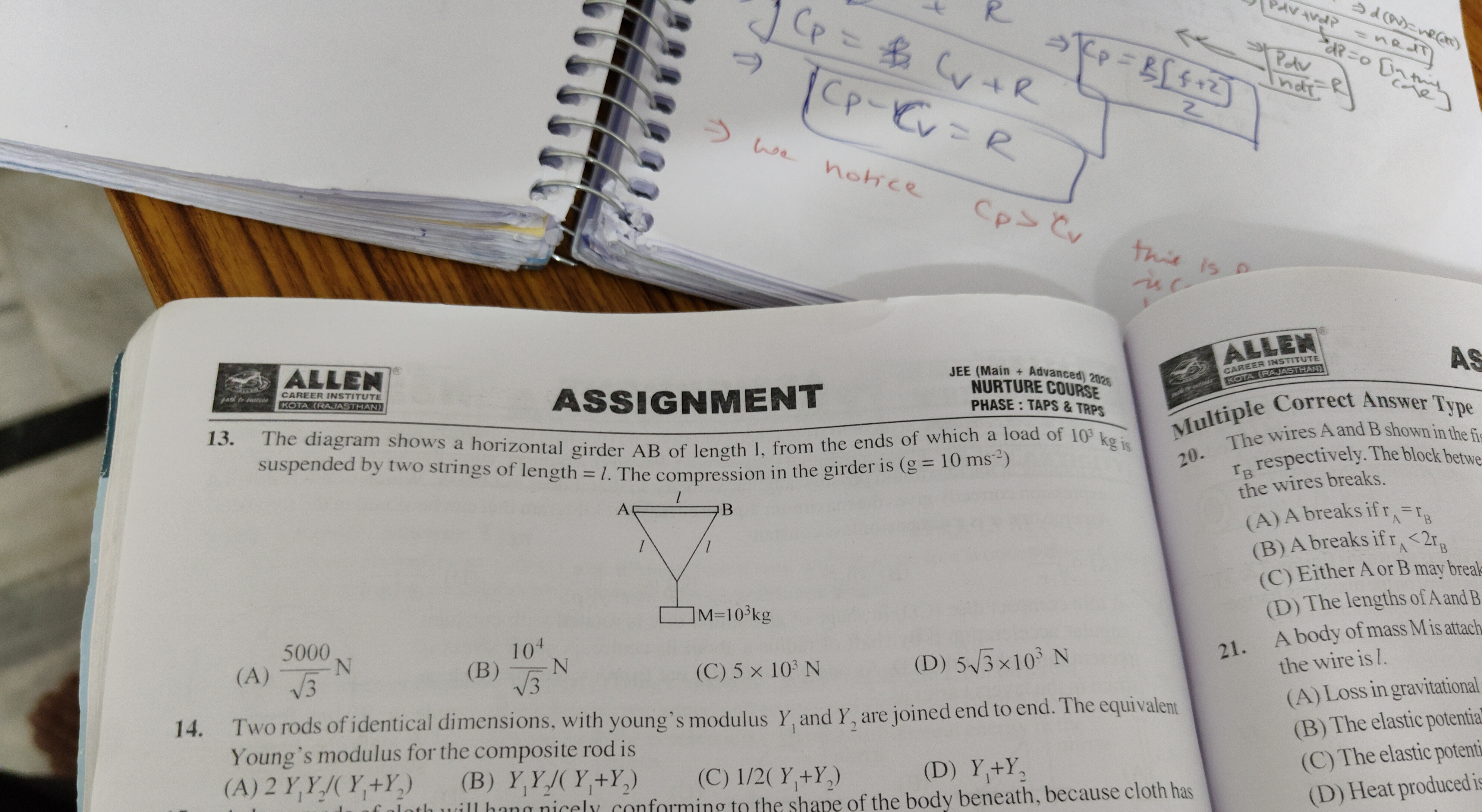Question
Question: The diagram shows a horizontal girder AB of length l, from the ends of which a load of $10^3$ kg is ...
The diagram shows a horizontal girder AB of length l, from the ends of which a load of 103 kg is suspended by two strings of length = l. The compression in the girder is (g = 10 ms−2)

35000N
3104N
5×103N
53×103N
35000N
Solution
The weight of the load is W=m×g=103 kg×10 m/s2=104 N. Since the lengths of the girder AB and the strings AP and BP are all equal to l, triangle ABP is equilateral. The angle each string makes with the horizontal girder is 60∘. Let T be the tension in each string. For vertical equilibrium, the sum of the vertical components of the tensions balances the weight: 2×Tsin(60∘)=W. Solving for T: 2×T×23=104⟹T3=104⟹T=3104 N. The horizontal component of tension at each end of the girder is Tx=Tcos(60∘). This horizontal component, if acting inwards, would cause compression. Assuming the question implies a scenario leading to compression, the magnitude of the compression force is Tcos(60∘)=3104×21=35000 N.
